Academy celebrates 70 years since founding
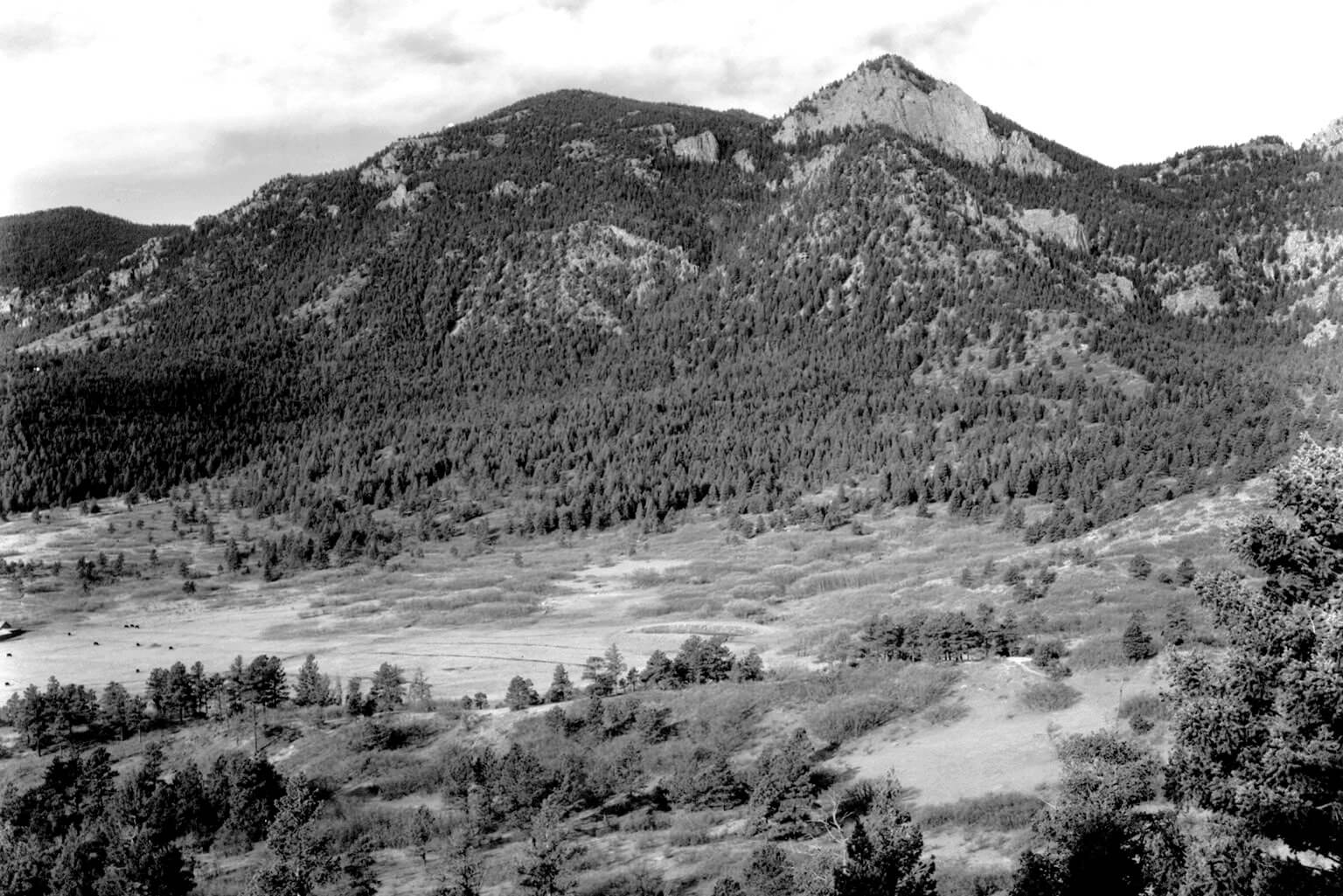
Renowned photographer Ansel Adams was commissioned by architects Skidmore, Owings and Merrill to photograph the site chosen for the newly-founded U.S. Air Force Academy May 14-15, 1955. The Academy celebrates its 70th Founders’ Day on April 1, 2024. (Photo courtesy of Ansel Adams Collections)
By Katherine Spessa
U.S. Air Force Academy Strategic Communications
U.S. AIR FORCE ACADEMY, Colo. – Built of glass and aluminum, the post-modern facades of the U.S. Air Force Academy campus stand stark against the sky and rugged mountains of Colorado, evocative of early aircraft and their juxtaposition of man and nature.
This was precisely the intent of architectural firm Skidmore, Owings and Merrill when competing for the highly-contested contract to design and build the newly founded U.S. Air Force Academy in 1954. As a separate service academy was created for the first time since 1825, the U.S. Air Force wanted its distinctive signature upon it.
After decades of advocacy by visionary and persistent military and civic leaders, impeded by World War II, the Korean War, and several equally persistent detractors, President Dwight D. Eisenhower signed Public Law 325 on April 1, 1954, formally establishing the U.S. Air Force Academy. This year marks the 70th anniversary of the signing, formally celebrated here each year as Founders’ Day with a parade of cadets on the first Saturday of April.
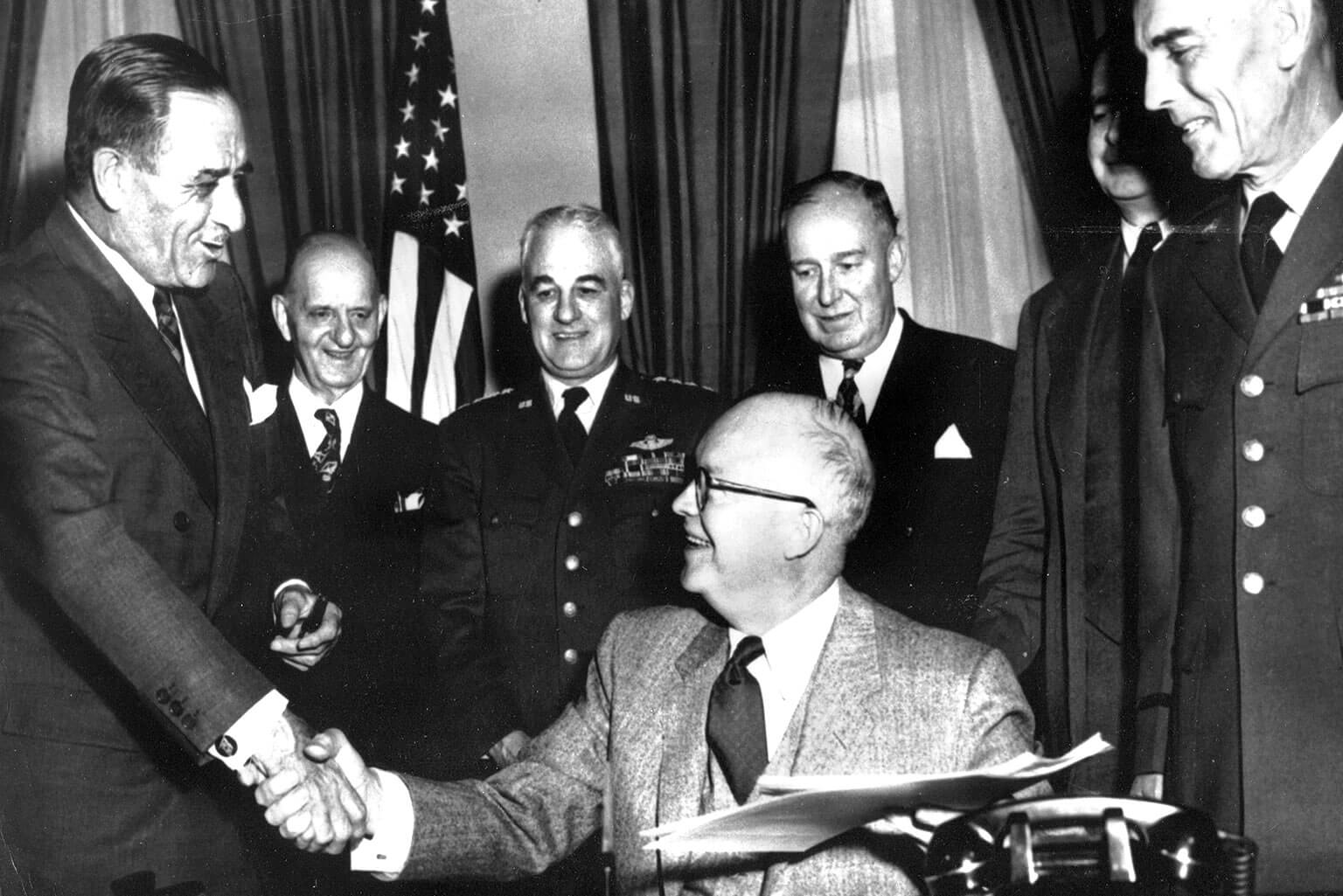
President Dwight D. Eisenhower shakes hands with Secretary of the Air Force Harold Talbott after signing legislation authorizing the establishment of the U.S. Air Force Academy April 1, 1954. The Academy celebrates its 70th Founders’ Day on April 1, 2024. (Courtesy photo)
“Both the U.S. Naval Academy and the [U.S. Military Academy at West Point] felt they could supply sufficient officers for the Air Force,” said Steven Simon, Association of Graduates special projects officer and historian, as well as an Academy graduate from the class of 1977. “While the Army and Navy are great at producing leaders of character for their services and missions, it was important that the Air Force be able to develop their own leaders based on its’ specific needs.”
The site of the Academy was chosen from amongst 580 proposed locations in 45 states. It had to meet several requirements stipulated by the selection committee, including that it must be at least 15,000 acres, within 50 miles of a city, not experience temperature extremes and be accessible via air, rail and highway systems.
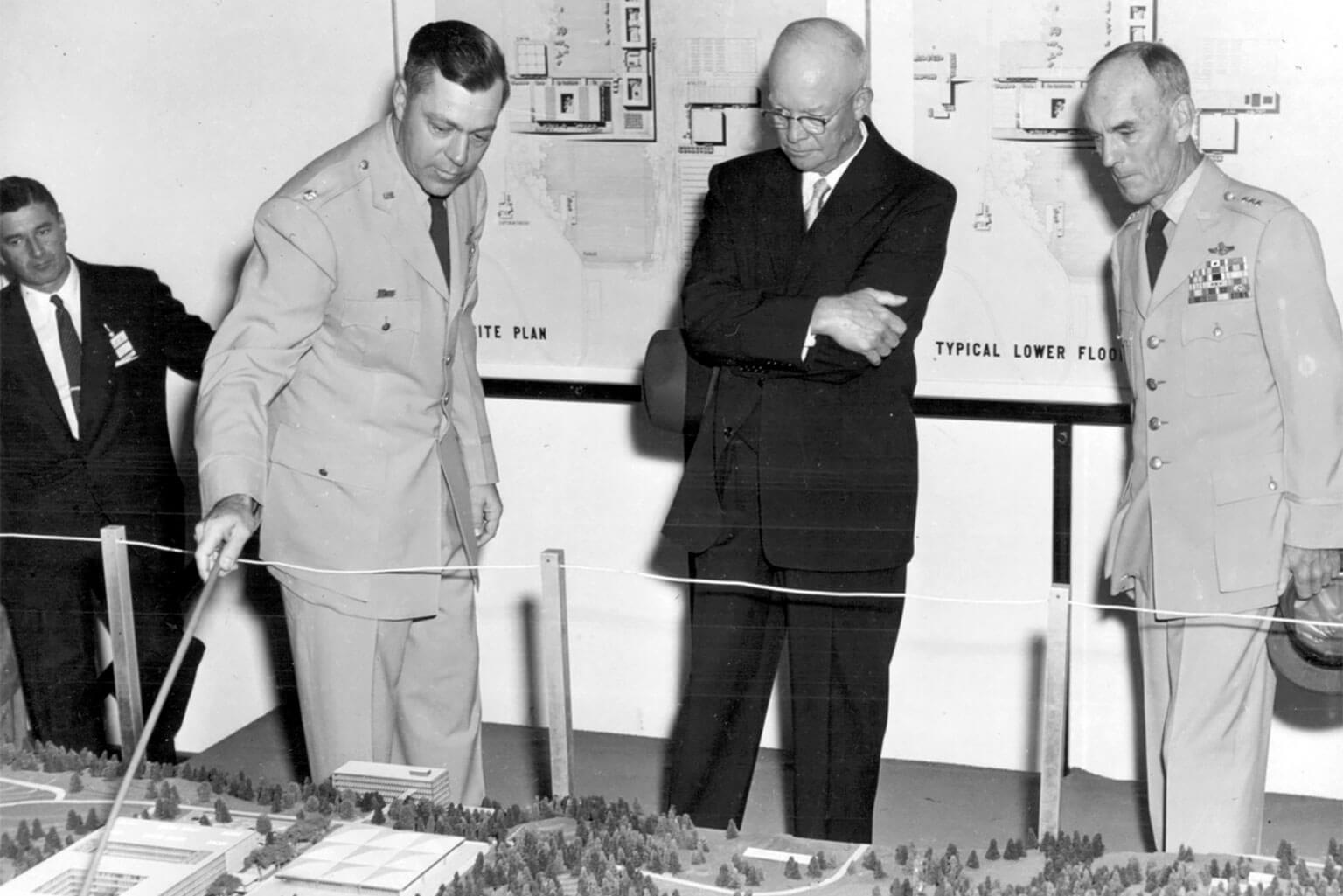
President Dwight D. Eisenhower reviews building plans for the U.S. Air Force Academy in 1955. The Academy celebrates its 70th Founders’ Day on April 1, 2024.(Photo courtesy of Clark Special Collections)
After a great deal of lobbying by the Colorado state officials, Colorado Springs city representatives and what Simon says were questionable tactics by some of its citizens, Colorado Springs was chosen.
“All is fair in love and war,” joked Simon after telling an anecdote of a rogue car salesman who ambitiously traveled to a competitor site with a newly grown-out beard and ignominious clothing to stir up unrest and thus make it unsuitable for the Academy.
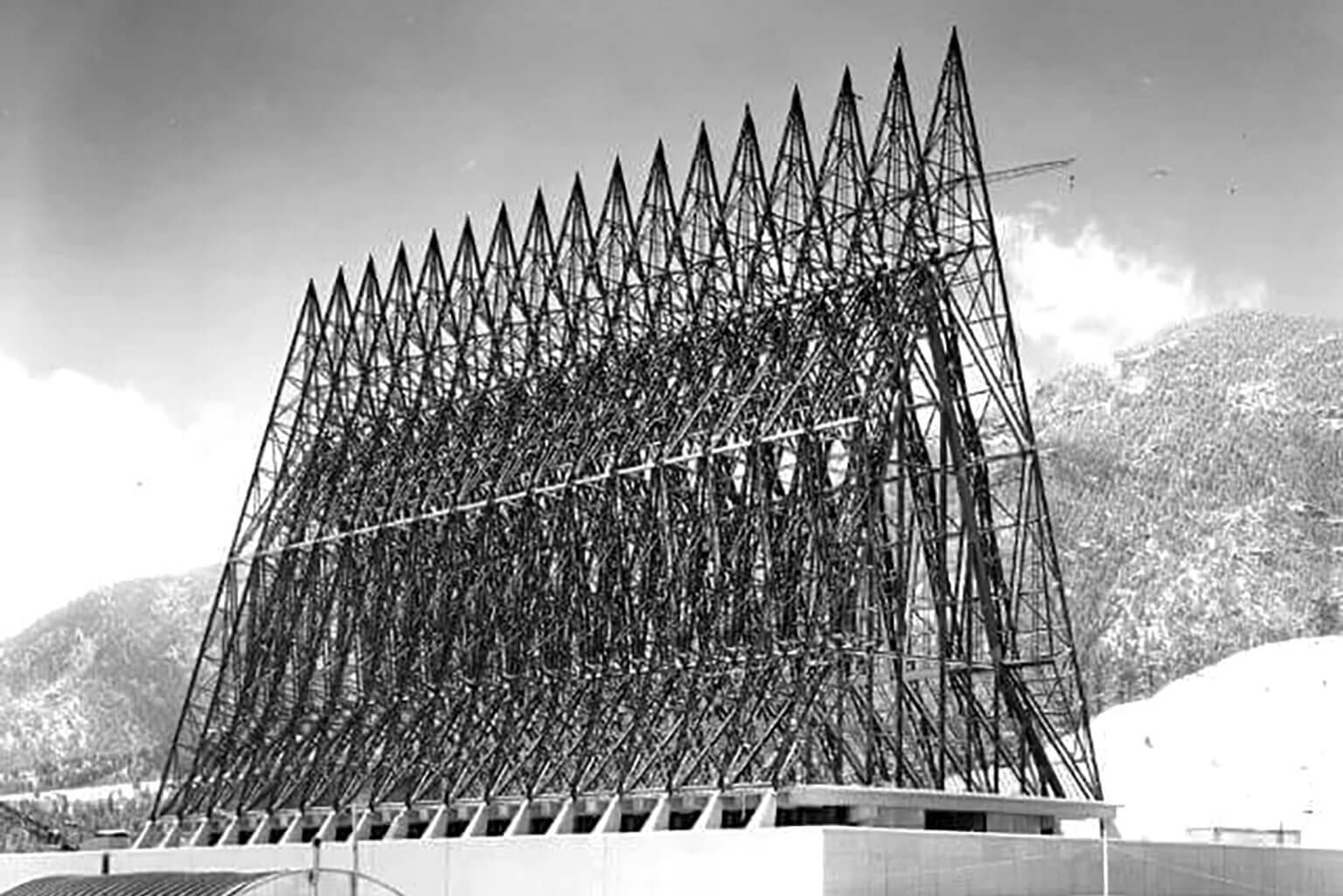
A view of the newly erected metal structure of the U.S. Air Force Academy Cadet Chapel during construction. The Academy celebrates its 70th Founders’ Day on April 1, 2024. (Photo courtesy of Clark Special Collections)
Another oft- and fondly repeated tale is that of Charles Lindbergh hiring a local plane to survey the site, upon which he was asked to present his pilot’s license. Only once Lindbergh spread out pilot’s licenses from 12 countries did the red-faced manager realize the man before him was the Charles Lindberg.
While the Academy was founded in 1954, the first classes were initially trained at Lowry Air Force Base, Colorado, just outside Denver.
“They didn’t want to wait for construction to be completed to start training cadets,” said Jenny Crider, U.S. Air Force Academy deputy historian. “They marched through the newly-completed gates to begin training on the Academy campus in 1958.”
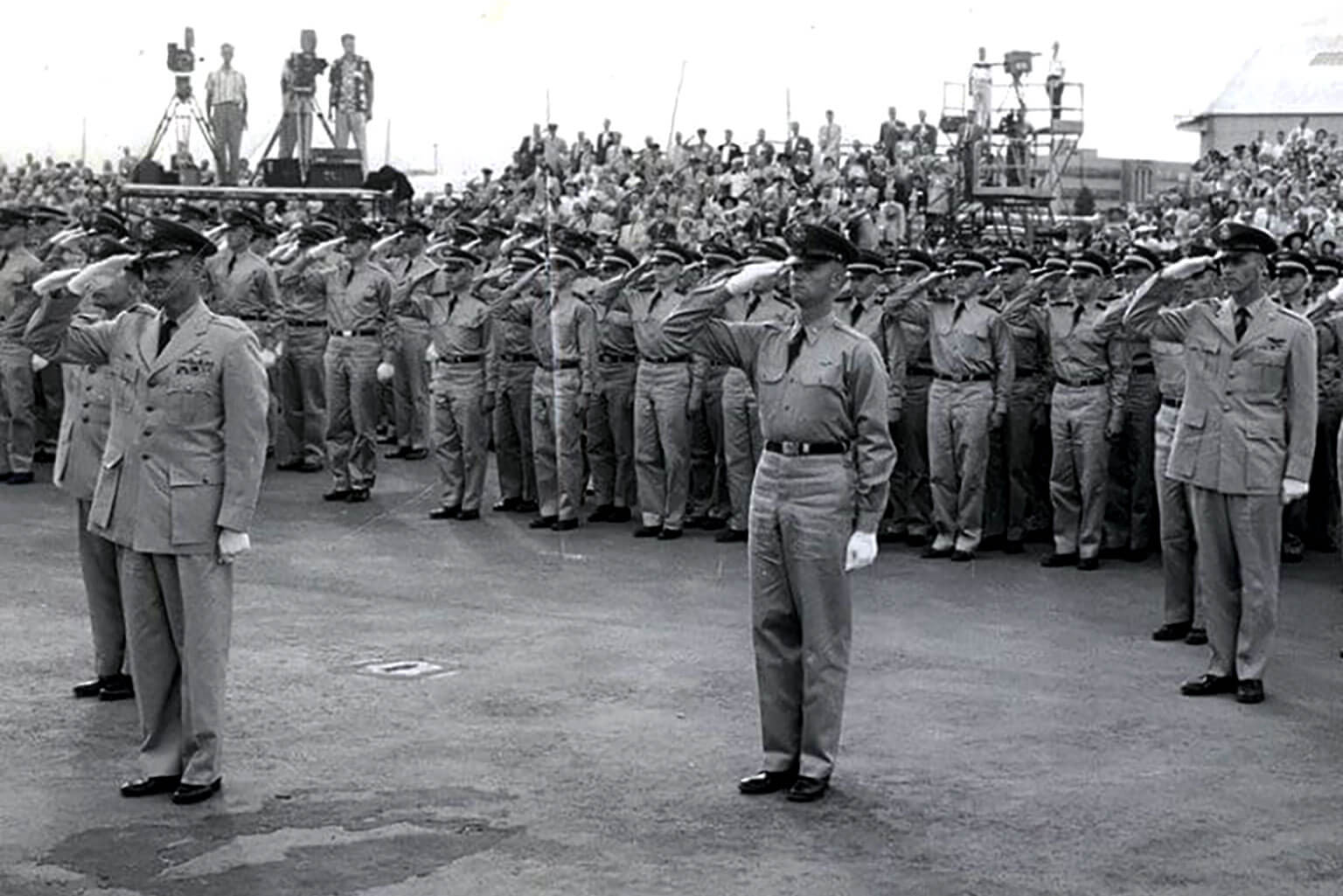
The first U.S. Air Force Academy class is sworn in July 11, 1955 at Lowry Air Force Base, Colo. The Academy celebrates its 70th Founders’ Day on April 1, 2024. (Photo courtesy of Clark Special Collections)
The Academy now sits upon 18,500 acres, its campus at the foot of Colorado’s Front Range and its property abutting the towns of Colorado Springs and Monument and the Pike’s Peak National Forest. At night, the city lights in the valley below can be seen from the Terrazzo, a marble and granite plaza that serves as the Academy’s focal point. Cadets are told to look at the city below as a reminder of whom they are serving.
More than four thousand cadets are in residence, producing approximately 1,000 new officers for the Air Force each May. To date, the U.S. Air Force Academy has commissioned more than 55,000 officers to the U.S. Air Force and nearly 400 to the U.S. Space Force.
Also of note:
- 5 graduates have gone on to become the Air Force Chief of Staff
- 40 graduates have become astronauts
- Chesley Sullenberger, Class of 1973, landed a commercial aircraft on the Hudson River in 2009, dubbed Miracle on the Hudson
- Janet Wolfenbarger, Class of 1980, became the Air Force’s first female four-star general in 2012
- The Academy holds more than 50 patents
- The Academy has eight wind tunnels and is one of only a few institutions to have a hypersonic Mach 6 Ludweig tube
- Cadets have designed, built, tested and launched five satellites and continue to provide daily operations and monitoring for those satellites
- The Cyber Competition Team has won the National Security Agency Cyber Exercise three times in the past four years
- 892 Falcon athletes have earned All-American awards for a total of 1,905 times
- 44 cadets are Rhodes scholars
- 24 cadets are Marshall Scholars
- The Academy’s football team has earned the Command in Chief’s trophy 21 times